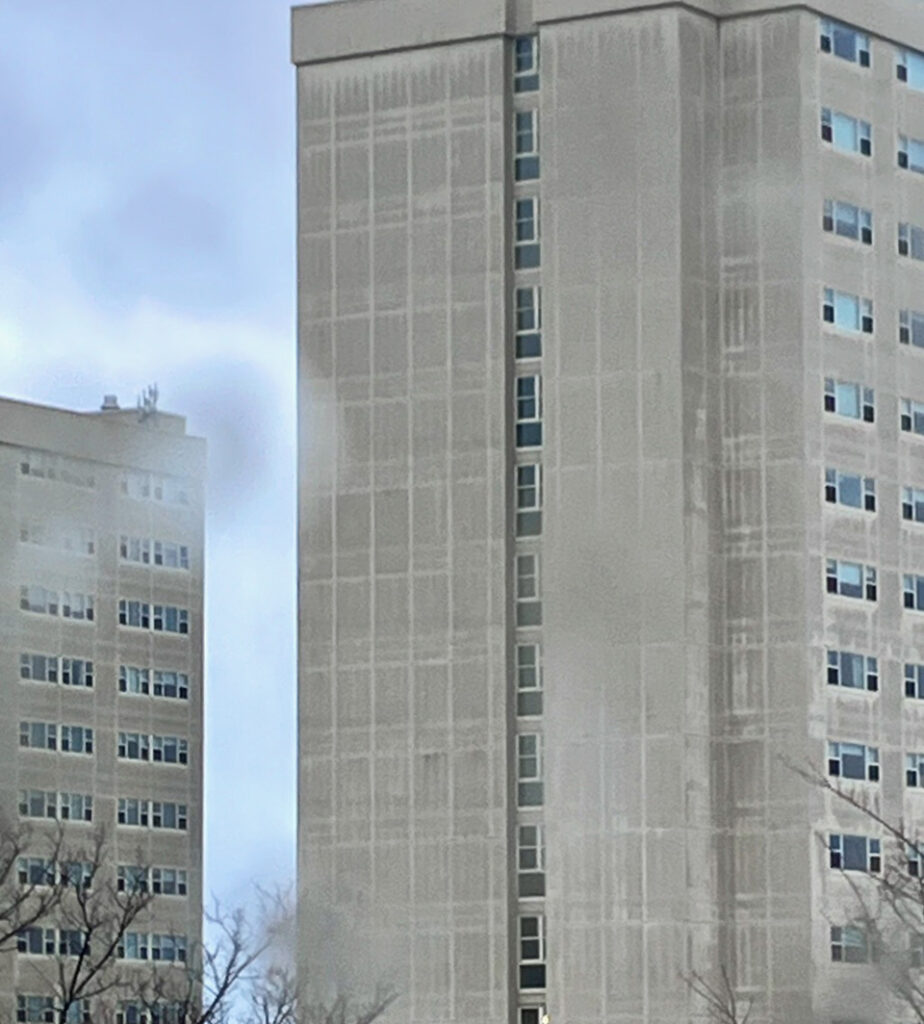
What is a Thermal Bridge?
The photo above is a dramatic illustration of a term you may have heard: “Thermal Bridge”. A thermal bridge is a pathway that allows heat to flow across a barrier, from one side of a building wall to the other, just like a bridge is a pathway across a river or other boundary.
What do we see here?
Buildings are insulated to keep the warmth on the inside during winter, and on the outside during summer. What you see in the photo above — on a cold, wet day in Boston—is many white lines showing the heat from inside crossing thermal bridges to the outside of the building. This heat is causing the surface of the building to dry out in a pattern corresponding to the metal studs inside the walls (the thermal bridges). This building’s exterior acts as an energy sieve, transmitting warmth to the outside that should be kept inside.
Have we fixed this? What’s next?
The energy code has come a long way since 2000. It now requires buildings to greatly reduce thermal bridges, usually with continuous insulation that covers them up. This is real progress. It keeps wasteful situations like we see here from being built today and in the future. The next challenge is to make sure that the continuous insulation used to prevent thermal bridging does not itself cause excessive carbon in the atmosphere. It’s because of concerns like this that architects now prioritize reduction of “embodied carbon” and Global Warming Potential, two more terms you can learn about in future posts.